Best VW Golf Mk5 Tuning Mods 2003-2008
"Thanks for reading this VW Golf Mk5 tuning tips."
Can you tune a MK5 Golf? Yes there are plenty of options and perhaps too much to choose from, so we will focus on the best mods for your Golf, including remaps, turbos, suspension and brake upgrades.
We were emailed and asked questions for more information on tuning and building a modified Golf Mk5 and particularly which turbo upgrades work best, so we've put together this page which covers our go to modifications for this car and what we feel are the best value modifications you can do.
If you want tips on other Golf models see also our tuning guides forMk3 Golf Mods, Mk4 Golf Mods, Mk6 Golf Mods and MK7 Golf mods.
Please watch our video introduction to VW Tuning.
Suspension and chassis tuning were improved for the Mk5. In addition to the new Pumpe Duse unit injector Turbocharged Direct Injection (TDI) diesel engine and updated suspension and chassis tuning, the Mk5 offered a choice of petrol engines with four, five, or six cylinders. In August 2003, Volkswagen launched their fifth generation of the Golf, the Typ 1K, a three- or five-door hatchback (August 2003–2008) and a 5-door station waggon (2007–2009) model.
The Mk5 Golf used the PQ35 platform which it shares with many VAG group cars and thankfully there are lots of mods and performance parts around for it.
The Golf Mk5 is a good project car to try. The key to Golf Mk5 tuning is finding the right mods you can waste loads of money if you do it wrong.
These updates and tuning components are often used by our users, so think about how far you want to go with your work before you start and start with a clear plan. Please let us know in the comments below what you've done or are planning and share your thoughts with us and our many readers.
You will save time and money if you buy the right parts for your car's intended purpose. The Golf Mk5 is hard to drive with racing parts because the Stage 3 motor sport improvements were not meant to be used on the road in normal traffic conditions.
People who drive their cars every day need more power and a wider range of torque throughout the rpms. Peak horsepower is great, but for everyday use, you'll need a usable spread of power so avoid mods that give peak or top end power gains.
Please watch our video which covers the top VW Golf Tuning Mods. Be sure to keep up with our latest YouTube content and subscribe.
Which Golf Engines are Best?
Larger turbocharged engines make the most power gains. Engine swaps are great value improvements for cars with small engines because the more you start with, the more you get back. Smaller engines that don't have turbos can also be changed, but the payback is much less.
We would go for the 1.8T, the 2.0Tfsi engines and the 1.9 TDi and 2.0 TDi (avoid the 104ps version unless you are desperate for the small engine size for tax or insurance purposes.
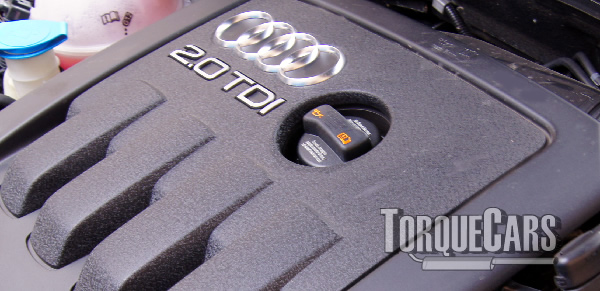
Tuning a Mk5 Golf
Let's take a look at your Golf Mk5 tuning project's possible changes.
Family-friendly: The Golf Mk5 is a great choice. It's also a lot of fun to drive. The GTi shows off the platform's power, and with a few simple changes and upgrades, you can get some impressive power numbers.
The best engine mods for your Golf Mk5.
- Remaps - A Remapped Golf ECU provides the biggest gains in terms of cost, aftermarket ECUs, and piggyback ECUs are all alternatives.
- Suspension Mods - Coilovers and suspension bushings can be changed as part of suspension modifications. Coilovers, new bushings, and a strut brace all improve the way your Golf Mk5 drives.
- Brake Mods - You can't just make it move faster; it also needs to be able to stop.
- Turbo upgrades - When you make changes to your turbochargers, forced induction is the most efficient way to get more air into your car. This allows you to burn more gas or diesel while making more power.
- Lighter flywheels - To speed up rev changes on most models, a lighter flyweel would be nice but this can cause problems on some engines. For exmaple Diesel engines, should retain the DMF (Dual Mass Flywheel). Otherwise, the vibrations would make you go crazy, so keep it that way.
Stages of Tuning for the Golf Mk5 golf
Typical stage 1 mods often include: Remap, Suspension upgrade (drop 29mm - 36 mm.), Alloy wheels, Lighter flywheel, Sports exhaust, Panel air filter.
Typical stage 2 mods often include: Ported and polished head, fuel pump upgrades, Fast road cam, Power/Sport clutch, high flow fuel injector.
Typical stage 3 mods often include: Engine balancing, Adding or upgrading forced induction (turbo/supercharger), Sports gearbox, Competition cam, Internal engine upgrades (pistons/head/valves).
Golf Mk5 Engine Mods
Specs and power output for the Mk5 Golf
| 1.4 | 2003–2006 | 75 PS (55kw; 74hp) @5,000 rpm | 126 Nm (93 lbft) @3,800 rpm |
| 1.4 | 2006–2008 | 80 PS (59kw; 79hp) @5,000 rpm | 132 Nm (97 lbft) @3,800 rpm |
| 1.4 FSI | 2003–2006 | 90 PS (66kw; 89hp) @5,200 rpm | 130 Nm (96 lbft) @3,750 rpm |
| 1.6 | 2004–2008 | 102 PS (75kw; 101hp) @5,600 rpm | 148 Nm (109 lbft) @3,800 rpm |
| 1.6 FSI | 2003–2007 | 115 PS (85kw; 113hp) @6,000 rpm | 155 Nm (114 lbft) @4,000 rpm |
| 1.4 TSI | 2007–2008 | 122 PS (90kw; 120hp) @5,000 rpm | 200 Nm (148 lbft) @1,500–4,000 rpm |
| 1.4 TSI | 2005–2007 | 140 PS (103kw; 138hp) @5,600 rpm | 220 Nm (162 lbft) @1,500–4,000 rpm |
| 1.4 TSI | 2005–2007 | 170 PS (125kw; 168hp) @6,000 rpm | 240 Nm (177 lbft) @1,750–4,750 rpm |
| 2.0 FSI | 2004–2008 | 150 PS (110kw; 148hp) @6,000 rpm | 200 Nm (148 lbft) @3,250–4,250 rpm |
| 2.0 TFSI GTI | 2004–2008 | 200 PS (147kw; 197hp) @5,100–6,000 rpm | 280 Nm (207 lbft) @1,800–5,000 rpm |
| 2.0 TFSI GTi(30) | 2007–2010 | 230 PS (169kw; 227hp) @5,500 rpm | 300 Nm (221 lbft) @2,200–5,200 rpm |
| R32 | 2005–2008 | 250 PS (184kw; 247hp) @6,300 rpm | 320 Nm (236 lbft) @2,500–3,000 rpm |
| 2.0 SDI | 2004–2008 | 75 PS (55kw; 74hp) @4,200 rpm | 140 Nm (103 lbft) @2,200–2,400 rpm |
| 1.9 TDI | 2004–2008 | 90 PS (66kw; 89hp) @4,000 rpm | 210 Nm (155 lbft) @1,800–2,500 rpm |
| 1.9 TDI | 2003–2008 | 105 PS (77kw; 104hp) @4,000 rpm | 250 Nm (184 lbft) @1,900 rpm |
| 1.9 TDI BlueMotion | 2007–2008 | 105 PS (77kw; 104hp) @4,000 rpm | 250 Nm (184 lbft) @1,900 rpm |
| 2.0 TDI | 2003–2008 | 140 PS (103kw; 138hp) @4,000 rpm | 320 Nm (236 lbft) @1,750–2,500 rpm |
| 2.0 TDI DPF | 2006–2008 | 140 PS (103kw; 138hp) @4,000 rpm | 320 Nm (236 lbft) @1,800–2,500 rpm |
| 2.0 TDI DPF | 2006–2008 | 170 PS (125kw; 168hp) @4,200 rpm | 350 Nm (258 lbft) @1,800–2,500 rpm |
We have the following tuning guides for the Following VW engines.
- 1.4 TSi/TFSi/Twincharge tuning
- 1.4 1.5 TFSi tuning
- 1.8T engine Tuning
- 1.8 & 2.0 TFSi (mk1) Tuning
- 1.8 2.0 TFSi (ea888) Tuning
- 2.0 TFSi carbon issue & care guide
- 2.5tfsi tuning
- 3.0 V6 24v TFSI Tuning
- 2.8 V6 30 valve, 24 valve 3.0 V6 30v and 3.2 VR6 Tuning
- 3.6 VR6 Tuning
- 1.6 TDi tuning
- 1.9 TDi tuning
- 2.0 TDI 140-170 tuning
- 2.0 TDI tuning (EA188)
- 2.5 TDI tuning
- 2.7 & 3.0 TDI tuning
- 2.5 Tdi R5
- 3.0 Tdi EA897
Remapping and Tunes for the Mk5 Golf
The ECU of the Golf Mk5 B5 has been setup to handle much of the engines controls and is ripe for an upgrade. Why?
Can you trust OEM maps are the best setup? They are at best a compromise, a worst case scenario in many situations. Some tweaking to meet local fuel emission rules and temperatures is usually required to come up with a single configuration that everyone can use.
Temperature differences, small mistakes, and bad weather are all taken into account by time maps. It's not very common for countries to set different goals for CO2, HC, and NOx emissions.
Manufacturers say that people should not be bothered by mechanical or fuel efficiency problems.
Because different countries use different fuel grades and have different levels of bad weather, there is a rule of thumb that must be followed to make sure that all cars around the world work well.
Also the power of each Golf varies optimally somewhere in the region of 20bhp based on the quality of the parts and how well they were installed at the factory. Instead of making timing maps for each car, they use a one-size-fits-all approach.
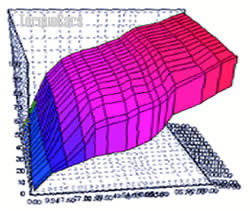
What are ECU maps?
Maps are used by carmakers to boost or reduce the power of the engine so that insurance costs and fuel efficiency go down and the car runs better. In many Golfs the same engine is available in two or three power levels, and this is primarily down to the map used.
In addition, since most people who use TorqueCars will be upgrading parts, a tune/remap makes sense and should be done after your other changes.
Regular maintenance, dirty plugs and leads, clogged air filters, and some blocked injectors are some examples. So on and so on, too. If you want to improve your engine, you should think about remapping.
Remaps are available for all turbocharged engines, giving them 20% to 30% more power. TorqueCars recommends that turbocharged cars be tuned/remapped with EFI.
A 150hp car can be mapped to 170hp easily and is often better than the factory spec 170.
Is there anything bad about changing the map on your Golf?
You should service your car more often, or maybe change the oil twice a year. A map made for high-octane gas and that pushed power to the max will require you to fix parts that don't work because of the extra strain they are under. Power puts more strain on parts like the turbo, injectors and internal engine components.
Months after a remap, the parts of an engine that wear or break will show up. If you're having trouble, check out our diagnosing faults after engine tuning/remapping guide.
Usually, a remapper will find problems with the turbocharger and the clutch before he maps the car allowing an opportunity to fix it.
Turbos may also break down, requiring the replacement of important parts like pistons and bearings. What about tunes or remaps on NASP Golfs? If you don't have a turbo, a tune/remap will only add a few BHP to your car (10 percent is typical).
TorqueCars wants non-turbo car owners to change first (cams, pistons, increase compression, engine balance, air intake, exhaust, head work, bigger valves etc... before a tune/remap is done.
For turbocharged engines, there are safety measures.
Remaps are often used to get more boost at lower rpms, which makes the turbo spin faster and hotter.
If you don't let the oil in the turbo cool down, it could get bad and need to be replaced, which could cost a lot. A turbo timer will also help to the turbo cool down, so you should buy one if you have an aggressive map.
Choosing the Right Remap for your Golf
Keep an eye out for claims about peak power. It's important to note that some tuners have been known to make a power blip or spike in order to get people's attention and get the most sales.
Take a look at the graph below as an example.
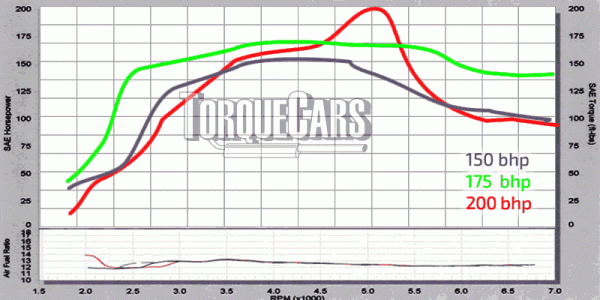
The red line shows an impressive 200hp peak, but that is all there is to recommend it.
Instead, pay attention to the whole torque curve from mid-to-high RPM. An area where the turbo and its parts can't take too much power is called a "spool down zone."
The green line, on the other hand, shows a steady rise in power over the RPM range, while the red line shows a drop in most areas.
On the green line map peak power is also shown at 4000rpm, which is impressive for a car with a top speed of 7000rpm.
It might be hard to tell if a mapper knows what he's doing and how to do it right, but reviews can help you figure that out.
When you visit the company's office, you can look at how the fuel and spark advance tables are being changed, or if they're setting this up on a rolling road and making the best map possible.
We are assuming a 1400kgs kerb weight, & Manual transmission for the performance tuning figures in the table below
| Base power | Quarter Mile |
Tuned to |
Kerb Weight |
Quarter Mile |
| 115hp | 18.27 | 120hp | 1400kg | 18.02 |
| 150hp | 16.77 | 170hp | 1400kg | 16.1 |
| 185hp | 15.67 | 225hp | 1400kg | 14.71 |
| 640hp | 1400kg | 10.98 | ||
| 550hp | 1200kg | 10.97 |
Anything over 225hp will require all wheel drive or rear wheel drive due to traction issues, even with a clever setup and differential you'll be hard pressed to get that power down on a FWD Golf. RWD conversions are possible but quite a challenge to pull off, it would be easier to drop in the allfour drivetrain.
Suspension Upgrade Mods for the Mk5 Golf
The first thing to improve for owners of the Golf Mk5 is how it handles. Drop the car 35mm and change the dampers; bigger drops will almost always need more changes. When you buy a car with the sporty suspension (GTi & R), it is already about 15mm lower than the normal suspension. Even though it is better for cornering, it feels a little rough and bumpy on everyday roads.
Race cars need to be able to corner quickly, and suspension plays a role. As long as the track is well-kept and forgiving, you can set the suspension more aggressively and lower the car to improve aerodynamics and lower the center of gravity. But we'll assume this is going to be setup for everyday driving and road use.
If you own your Golf Mk5 for a long time, the rubber suspension bushings will break down and degrade. This will make the car suspension move more jerkily, and the suspension won't hold the car in place the same way it should and your steering feel will suffer.
You should start by fixing the basic set-up. Even though replacing the polyurethane bushings with rubber ones is a good idea, don't go crazy. VW chose rubber for a good reason: it helps to soften the vibrations of the road when you drive on it, but you can get softer Poly bushes which are a good option for the Mk5 Golf.
When setting up and choosing a suspension for your everyday driven Golf Mk5, what should you keep in mind?
The suspension keeps the tires' angle on the road for the best contact area during cornering and braking etc... To keep body roll to a minimum, the car's center of gravity needs to be as low as possible so that it doesn't roll as much. In general, most Golf Mk5s should be dropped by 35mm, and those with sports suspension could be dropped by 20mm. More than this seems to adversly affect the handling but that does depend on the quality of the kit you buy.
In Golf suspension Upgrades, there are some myths and common mistakes.
Expecting a suspension system that can't be changed and lowers the car by 50mm to be perfect seems quite a common misconception.
People who sell them often say that they can be used on any and all types of Golf, including diesel and gasoline ones. There is no such thing as a "one-size-fits-all" suspension for any engine, wheel, or weight of the Golf Mk5 (the diesel engines are pretty heavy).
If the angle of the final drive to the wheel hub isn't right, the drive shaft and gearbox could be damaged. When choosing a suspension upgrade package, the weight of the car is usually not taken into account and it should be.
Changes to the ride height can affect how the suspension moves when it's under a lot of stress, which could cause the tyres to wear out early.

Also avoid matching upgrades parts with OEM components, so if you buy lowering springs and use the basic dampers or if you buy new dampers and use the standard springs, you will get issues! The entire suspension system must be checked, and the shock must be changed as a matched unit on each corner of the car.
These tolerances may be much lower with standard suspension and 17-inch rims, but lowering the car may cause a lot of problems and altering the wheel size further complicates this in some case (see below).
The goal should always be to improve the car's handling, and lowering the car helps by cutting down on airflow under the car.
Cutting the springs is NEVER a good idea - always get springs made for the ride height you need.
So never cut your Golf's springs. In the event that they are cut, they may shatter or break. Some batches of VAG group suspension springs were pretty weak, my springs broke three times on me. The low ride height looked great, but the handling was terrible! If one of the springs breaks, I think it would be best to change them all.
Golf Coilover kits
If you want your car to be more comfortable to drive, you should have a suspension package that can be quickly changed to fit your needs. If you drive a certain way, you can change the coilovers so that they work better for you.
KW, Koni, Bilstein Eibach, and Bilstein are good brands for the Seat Golf Mk5.
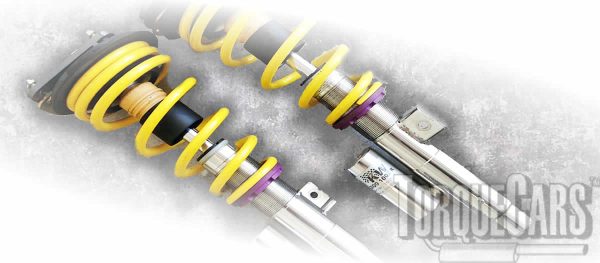
Brake Upgrades for the Mk5 Golf.
Don't forget about the brake pads. The VW Golf stopping power is affected more by the pads than anything else, even the discs, and worn brake pads can completely ruin your Golf Mk5's braking system, so it's important to maintain them and use decent quality pads.
Brakes are important because you need to be able to stop quickly when you're going fast. A brake pushes a friction pad on the disc to turn the movement of the car into heat.
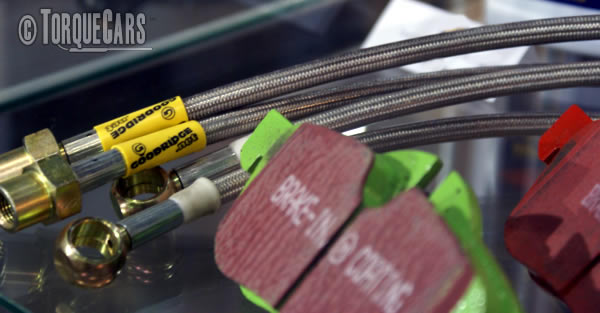
When the heat is generated, the car's forward speed slows down. In nighttime motorsports, the brakes glow with heat after a long run, which shows how much heat we're dealing with.
When you press the brake pedal, the force goes to the servo, which is a "magic box" that uses engine power to make your foot pressure feel much stronger. This extra pressure is sent to the friction pads through a brake fluid-filled tube (liquids do not compress like air so efficiently transmit the braking pressure).
Use high-quality braking fluid and braided hoses to keep your brake fluid from getting too hot when it comes into contact with the hot end of the brake pad. This will put more strain on the fluid when you use the brakes a lot.
Changing the brake fluid on a regular basis is important because brake fluid is hygroscopic (attracts water particles) and can boil at high temperatures. Air bubbles in the brake fluid can make it spongy at best and completely stop the brake at worst, which is why it should be changed.
(To learn more about brake fade, see the Brake Fade page.)
Brake Disks for the Golf Mk5
You need to choose a quality Brake Disk. Because the pad on top of the discs gets hot when you brake, the cooler the discs can stay, the better. So larger discs or vented and grooved discs will improve your Golfs braking endurance.
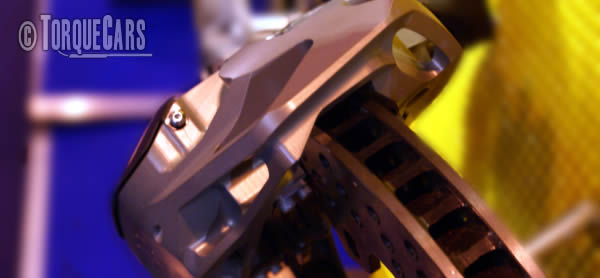
As a result, the surface-to-air ratio gets better and faster with the middle channel of the vented disc.
There are drilled discs that help keep the pads "clean and sharp." This is because they make it easier for air to get through, which makes it less likely for gas to build up between them. Larger discs provide more cooling, but they may need a different alloy wheel.
Golf MK5 Brake pads
Pads have different materials in them. High-friction brake pads are important, even though they can make a lot of noise and dust they will always stop your Golf effectively.
At high temperatures, racing brake pads are made of a high-friction compound that works best. At lower temperatures, they may be noisy and ineffective.
Race-grade brake pads aren't good for the road if you brake on cold pads or in short bursts, because they only work when they're very hot.
Pagid and Black Diamond make high-performance brake pads that work well on the highway. I've used both on my VAG group cars.
Even though how you drive affects how long your brake pads and discs last, some high-performance brake pads make very little brake dust and last much longer than the standard pads I was using.
Do not fix your brakes yourself if you are not a skilled mechanic, says Torquecars, most mods are not life threatening but brakes are and should be respected and thoroughly tested when components are changed out.
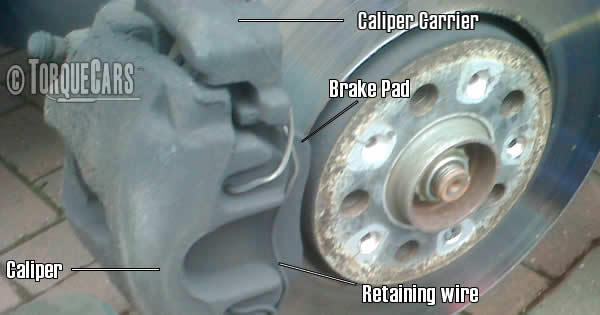
In the VAG group's parts bin, you might find low-cost ways to make your car better. You almost always have to measure the disc before you buy an upgrade for your car. Both the 2.8 Golf and the R32 have Discs of 312mm and 334mm, which are great upgrades, but you could also use Audi RS or Porsche brakes as well in most cases.
A basic-spec Golf with small brake discs may have an easy upgrade when you can get parts from your local part reclaimers and breakers yards. You may also be able to get parts from a performance model in the same family for a cheap price. As a general rule, this is much cheaper than having to buy an extra-large brake upgrade kit.
Because most hubs from the VAG Group are interchangeable, brakes from VW, Audi, Porsche, Skoda, and Seat work with brakes from other cars in the group. Some of the smaller hubs will need to be swapped so they can handle the larger brakes.
Modifications to the Brake Calipers
It's time for calipers and pistons to be discussed, these are two more things on the list (the pistons push the calipers and press the pads against the discs).
Most of the time, the more pistons you have, the more powerful the clamping force, which in theory means you can use bigger pads.
Large calipers aren't just a simple modification that you can put on and forget about. You need to think about things like different pad sizes and larger braking discs in most cases.
Also, the total volume of brake fluid used must match the amount used in the master cylinder of the donor car. The pedal stroke and feel will change before the brakes touch, and the pedal will most likely stay closer to the car's floor, cutting down on how far the pedal can travel.
A bigger master cylinder may need to be installed in the original master cylinder to match the capacity of the source car's master cylinder.
Turbo upgrades and other changes for your Golf Mk5
Larger turbochargers make more power, but they also wear down the engine and make more heat. It can work in a petrol engine between 1100°C and 100,000-150,000rpm.
It's possible that with some turbo systems and newer cars, these speeds could be doubled. At high speeds, lubrication, cooling, and balancing all need to be done. An oil seal could break or get stuck, and bearings could wear out. These are the three main things that could go wrong with it.
You have two ways to boost your turbo.
- It has a hybrid turbocharger design (based on your OEM casing but with internals from another turbo.
- A different turbo replacement usually means making the turbo bigger, which means installing new pipes and putting in more work.
Even though hybrid turbos work well on standard maps at low boost levels, and just replaces the original turbo you'll get so much more if you take advantage of remapping.
Look for a turbo with better bearings, a more stable design and stronger seals if it is a hybrid turbo. Reduced rotations per minute improves reliability, but it also reduces the power.
When you choose a turbo upgrade for your Golf, think about the shape of the air intake, the compressor wheel, and the turbine profile. These things may move faster, compress more air, or boost at higher or lower RPMs based on what you want and where you need the power in your RPM range. With a smaller turbo, the torque curve is often more smooth and the lag is less.
If you want more information, check out VAG's Turbochargers in the Volkswagen and Seat Group for more information.
For this reason, we will look at a few popular turbos from the VAG group.
We also think about the turbo's power limits, which could be exceeded at the cost of the turbo's life.
When a turbo is about to fail in your Golf, you'll often hear a whining or siren sound before the turbo breaks down, and then there will be smoke. You need to look for a new one now. If the compressor fails and is pulled into the engine, it could cause a lot of damage.
K03, K03s, and K04 all the differences.
The K03 turbo was made from 1996 to 2000, then the K03 turbo took its place. However, depending on the model and where the car came from, it could have been installed on either side of these years.
1.8T AGU engines with K03 turbochargers were made for the cars. These engines come with a mass air flow sensor, a cable-operated throttle, and smaller injectors, among other things.
They are used on AUM engines that have MAF and MAP sensors. Improved drive-by-wire throttles on these engines make them more efficient and faster. Stigan and BorgWarner are two of the best-known companies that make turbocharged K03, K03s, and K04 engines, but there are many more companies offering upgrades and hybrids that bolt on.
They came in two sizes: the K03 and K03s were both small, and the K04 was bigger. The K04 has more power, but it takes up more space than the K04.
Dfferences between the Golfs KO3 and the KO3s.
The most important difference between turbos is how many blades there are in each one of them. The K03 has eleven blades, but the K03s only has eight. This is because the K03 has more blades but the K03s makes more power due to the design and shape of the blades.
It doesn't matter what kind of turbos you have, but the actuator that opens the turbine bypass valve can vary. It can range from a 65N to an 85N, with some having a two-port actuator the more powerful turbos tend to have stronger components fitted to them, which is a sensible path to take when upgrading your turbo.
Because 180-horsepower engines have more boost pressure, they often use actuators with more force to open, these would not work very well on the lower powered turbos though.
It's common for hybrid turbos to have bigger compressors on the intake side, which can make them more powerful. This strategy is used by many hybrid car manufacturers and works quite well.
Original K03 maps often show a very low amount of power compared to what you get from a remap. If you add the right modifications and add-ons, it could easily reach 190 horsepower and retain it's reliability.
On the other hand, the turbo's life will be cut short as you push it harder and closer to the safe limits.
There are more K03s out there than there were the previous K03. The safest amount of power for K03s is 215 bhp. Anything more than that puts the turbo's life in danger. Some people have said that this turbo can make up to 250 horsepower, which means that there is still room for improvement, but expect the turbo to last a shorter amount of time.
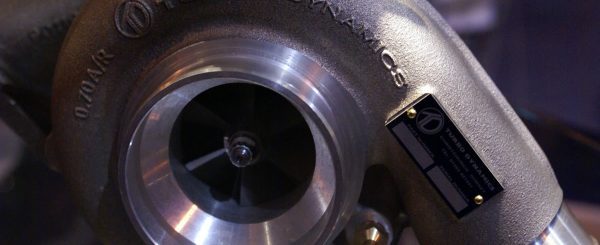
Turbo Power Constraints & Limits
Turbo limits - safe should retain factory reliability and longevity, the Max however is pushing to the limits and will certainly shorten the lifespan of the turbo.
| Turbo | Safe Max | Maximum |
| K03 | 190hp | 220hp |
| K03s | 215hp | 250hp |
| K04 | 220hp | 350hp |
With a few minor adjustments with a Stage 1 remap, you should expect your A3's K03s turbo to produce between 210 and 220 horsepower (Air filter, exhaust, bolt-on modifications).
K03s have at least 25% more power headroom than K03s. If you're willing to sacrifice turbo life or do more maintenance, you can get even more.
Is There a Difference Between the K03(S) and the K04.
The K04 has a big advantage over the rest of the turbos. The K04 is a lot bigger than the K03 and K03s. It has a lot more power at the top, but there is a little lag at the bottom.
The K04 can make about 350 bhp with the right parts, but the KO3 can only make 220 bhp.
Golf Diesel Turbo Upgrades
The good BORGWARNER BV40 VNT was used on the 2.0 TDi until 2003. There are a lot of hybrid options for the car. Modernizing your diesel project with a Garrett GTC14V 170 turbo will give you more room to breathe. Later 2010 2.o TDI140 and 170hp models had different turbos than the Borgwarner BV43. If you want to improve your diesel Golf Tuning, you can swap in a Garrett GTC14V 170 turbo.
If you want to learn more about turbo diesel engine upgrades, check out our 2.0 TDi page.
How To figure out how to pick the Best Turbo Upgrades
Because there are so many fake and low-quality turbo units on the market, it's important to do a lot of research to find out which sources are trustworthy.
A cheap turbo upgrade will not work for six months. If you do this, you will have to do it again in six months.
It's important to look for a turbocharger that has the following features:
- A compressor wheel made of billet aluminum (light and strong)
- Vanes that flow better (Maximizes the boost available)
- A high-performance actuator for the wastegate (sharpens throttle response and maximizes your power gains)
The smallest changes could make the difference between a profitable project and a money-losing one. After a turbo update, you need to tune/remap your phone.
In most cases, when you replace the original turbo with a more powerful aftermarket turbo, you need to change the car's ECU programming. If this isn't done, the engine may run lean or go into "limp home mode," which will show up on the screen.
Replacements for Golf turbochargers
There are a few things you can do when it's time to change the factory turbocharger go with a hybrid that bolts on or get a turbo conversion that mates a new turbo to your Golfs Manifold.
Keep in mind that inline and transverse mounted engines have different turbo designs, so don't mix them up:
Even though newer and better turbos are often added to cars, it's not as easy as it looks to change a turbo. When changing the turbocharger on a VAG group car to a different model, the following steps must be taken:
- People who have worn-out fuel injectors need to get them changed out.
- The diameter of the exhaust pipe can be made bigger.
- It's very likely that you'll need to change your fuel pump & injectors.
- Replacing the boost controller
- Remapping
- Increasing the efficiency of the intake cooling system (intercoolers)
- The waste gate will have to be changed.
- Catalytic converters that are less restrictive
- It's important to remove and replace exhaust mufflers that are too small.
- If there is a restriction, the intakes may also need to be changed.
People who want to put a VAG Group turbo in another car have to pay attention to how the engine compartment and the base engine are made. It's likely that the exhaust and intake pipes will need to be moved, the intercooler will need to be changed, and there will be very little space.
Constraints on Turbo Power Limits
Following Stage 1 improvements, the maximum power output of the K04 turbo rises from about 220 to 350 horsepower. However, the FMIC (Front Mount Intercooler) needs to be improved to reach this level of power. To get so much power, use fuel that has a lot of octane in it, like diesel (your OEM clutch will also typically start to slip).
Turbo limits - safe should retain factory reliability and longevity, the Max however is pushing to the limits and will certainly shorten the turbos lifespan.
| Turbo | Safe Max | Maximum |
| K03 | 190hp | 220hp |
| K03s | 215hp | 250hp |
| K04 | 220hp | 350hp |
Lighter flywheels for your Golf
A flywheel that isn't as heavy will transform your engine (in most cases).
When you're driving, the flywheel makes the car more resistant to changes in engine speed. This is great for cruising, but bad when you need the engine to move quickly.
A lighter wheel puts less strain on the engine and allows it to rev more freely, which leads to more power. If you want your engine to run better for racing, you need to make it more powerful. Engine momentum, or "inertial spin," can be seen on slopes and hills where the vehicle would slack off. A lighter flywheel makes it easier for the engine to move, which makes the vehicle move faster.
There are a lot of flywheel weights to choose from so that you can get the best balance of torque and free revving. If you drive a street car, you don't want to go too light. This will make it hard for you to keep your tick over. You can talk about your application with other people who use TorqueCars in our forums for vehicles.
You have to change both the clutch and the flywheel at once.
Some versions had a dual mass flywheel with a spring that connected two different parts of the flywheel. There's a spring that slows down rotational acceleration and deceleration, which is good for diesel engines.
They also make it less likely for four-cylinder engines to suffer reversion or stall. Before you do anything else, we recommend reading our guide on how to convert a DMF to SMF first this is not suitable on many Golf engines.

MK5 Golf Intake and Exhaust Mods
We'll now look at the intake and exhaust systems to make sure the engine has enough power. A full induction package is the best way to get more power. We think it's better to use a panel air filter on small engines, because they won't have as much low-down power with an induction kit.
Both exhaust and intake only remove restrictions, so if there is no restriction you won't get any benefits. Only tuned engines pushing around 20% more power will hit a restriction.
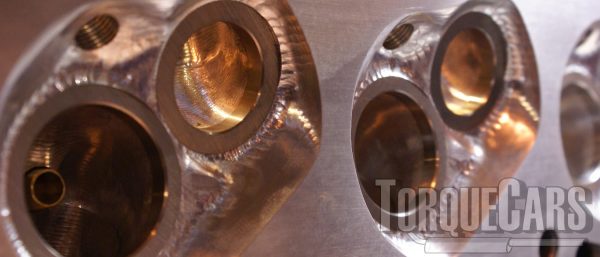
Port work and head flow, as well as bigger valves in the engine heads of the Golf Mk5 car, will make the car more powerful. This will also let you make more power with other tuning items.
When you match up the air intake port to the intake manifold, it won't do much. If there is a step that is blocking airflow into the engine, this won't help. As a result, the exhaust ports are the best places for you to do your own port matching.
There isn't always a good reason to make the port size bigger, and it's only necessary in very well-tuned engines when the port size has become a bottleneck.
Using slightly narrower channels with fewer bends or angles could help a lot with flow rates.
In order to avoid turbulence on the downflow side, you should try to make both port apertures about the same size. This is why many current intakes are made of lightweight molded plastic that can be shaped to a very precise shape.
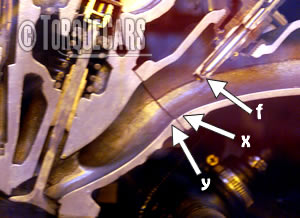 There is a high-performance rally car engine shown in this picture. The goal is to make a smooth connection between the intake manifold (x) and the engine port (y).
There is a high-performance rally car engine shown in this picture. The goal is to make a smooth connection between the intake manifold (x) and the engine port (y).
Sprays gasoline into the intake manifold through the fuel injector (f), which is connected to the valves and has a direct line to them (a direct injection engine clearly does not).
The angle at which air enters the engine has also been changed, allowing it to almost go straight into the engine. The goal is to make the air flow as smooth as possible and cut down on the number of bends, which isn't always possible on every engine.
Avoid getting the biggest exhaust you can find; 1.5 to 2.5 inches is usually the best size for power gains, though this isn't always the case.
Golf Mk5 Fuelling Upgrades
With new injectors, you'll be able to give the engine enough fuel. When pushing up the power you will need to uprate to the fuelling. More power needs more fuel.
Frequently power losses, flat spots and erratic idling after uprated modifications are done can usually be traced to timing or fuel delivery issues.  Improving the injectors is another beneficial modification and will deliver sufficient fuel.
Improving the injectors is another beneficial modification and will deliver sufficient fuel.
Add a new fuel pump to meet the increased fuel needs of your tuned injectors.
VW Golf Mk5 Alloy Wheels Upgrades
Alloy wheels help to cool down the brakes and are usually lighter than steel wheels, so they are better for your car. Big alloy wheels on the Golf Mk5 look great, but they have a big impact on the car's performance.
Because of the difference in the effective final drive ratio, the higher you go, the slower your peak speed will be because you will have less power. Keep the overall diameter of the wheel the same as the manufacturer says it should be.
In any case, we don't think you should go any higher than 18 inches in any case. Some of our members have put on 19- and 20-inch wheels, mostly to fit Porsche brakes, but because of the bigger rims, they've all had tram lining and other problems. Alloy wheels help to cool down the brakes and are usually lighter than steel wheels, so they are better for your car. Even though they look great on the Golf Mk5, not everyone will like them. Large alloy wheels will make it hard for you to do well.
Because of the difference in the effective final drive ratio, the higher you go, the slower your peak speed will be because you will have less power. Keep the overall diameter of the wheel the same as the manufacturer says it should be.
In any case, we don't think you should go any higher than 18 inches in any case. Some of our members have put on 19- and 20-inch wheels, mostly to fit Porsche brakes, but because of the bigger rims, they've all had tram lining and other problems.
Please join us in our forum to discuss the Golf Mk5 tuning options in more detail with our Golf owners. It would also be worth reading our Golf tuning articles to get a full grasp of the pros and cons of each type of modification.
Please Check out my YouTube channel, we're regularly adding new content...
PLEASE HELP: I NEED YOUR DONATIONS TO COVER THE COSTS OF RUNNING THIS SITE AND KEEP IT RUNNING. I do not charge you to access this website and it saves most TorqueCars readers $100's each year - but we are NON PROFIT and not even covering our costs. To keep us running PLEASE Donate here
If you liked this page please share it with your friends, drop a link to it in your favourite forum or use the bookmarking options to save it to your social media profile.
Feedback - What do You Think?
Please use our forums if you wish to ask a tuning question, and please note we do not sell parts or services, we are just an online magazine.
Help us improve, leave a suggestion or tip
Please watch this video and subscribe to my YouTube channel.

 Click to accept YouTube Cookies & Play.
Click to accept YouTube Cookies & Play.